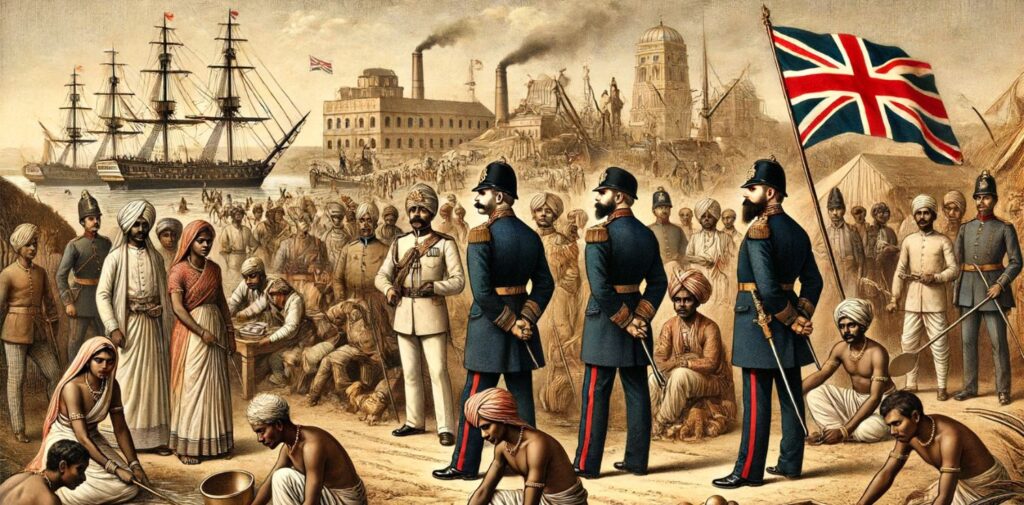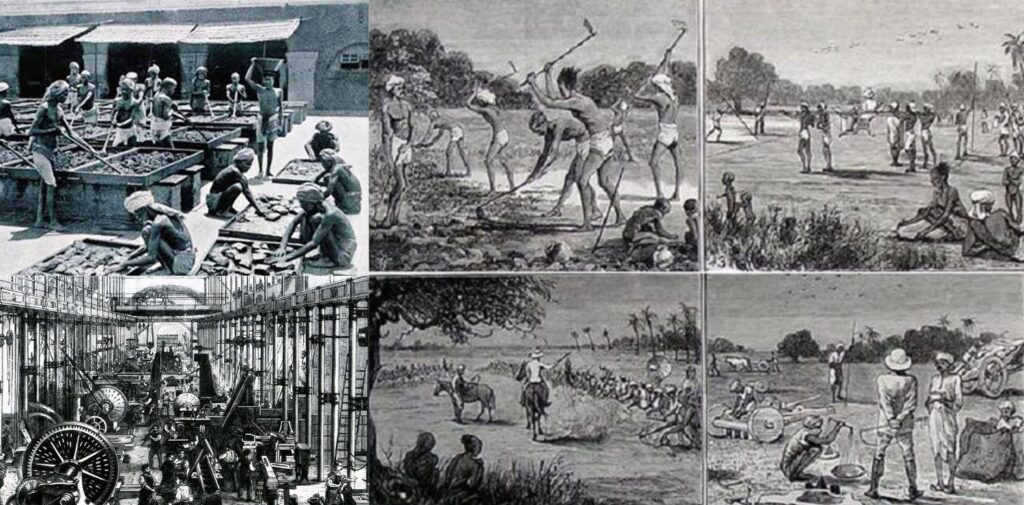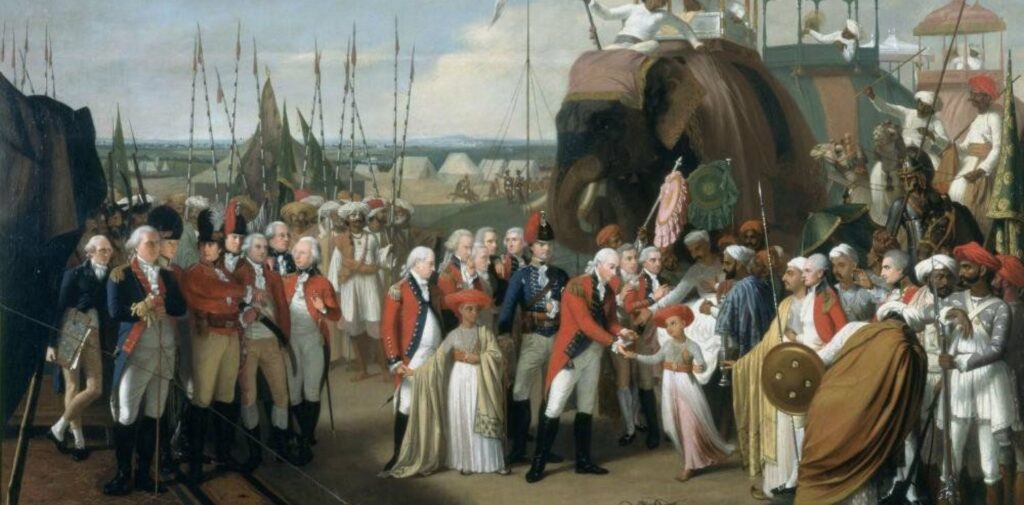The period of British colonial rule in India lasted for nearly two centuries, from the mid-18th century until India gained independence in 1947. During this time, the British government introduced several economic reforms aimed at benefiting the British Empire. However, these policies had a significant and often harmful impact on India’s economy, society, and development. In this article, we will explore the economic reforms introduced during British rule and how they affected the Indian economy and its people.
The British Economic Agenda in India
When the British first arrived in India, their primary interest was to establish control over the vast resources of the country. The British East India Company, which ruled India in its early years of colonization, was focused on extracting wealth from the country to benefit Britain. After the British government took control in 1858, the colonial economic policies continued to prioritize British interests over the needs of the Indian population.
The British introduced several economic reforms, including land revenue systems, the development of infrastructure like railways, and the establishment of a monetary system. While some of these reforms had long-lasting effects on India’s infrastructure, the overall economic policies were designed to ensure that India remained a supplier of raw materials for British industries and a market for British goods.

Key Economic Reforms Under British Rule
1. Land Revenue Systems:
One of the first economic reforms introduced by the British was the establishment of land revenue systems. These systems included the Zamindari System, the Ryotwari System, and the Mahalwari System, each of which was designed to extract the maximum revenue from Indian peasants.
- The Zamindari System: Under this system, large landholders (zamindars) were responsible for collecting taxes from the peasants. The zamindars, who were often not local to the area, exploited the peasants by increasing taxes and taking a large share of the crops. This system led to widespread poverty and the oppression of farmers.
- The Ryotwari System: Introduced in places like Madras and Bombay, this system required individual farmers (ryots) to pay taxes directly to the British government. Although this system gave farmers some control over their land, the tax burden remained heavy, and farmers were often unable to pay, leading to widespread landlessness and poverty.
- The Mahalwari System: This system was used in parts of northern India and involved taxing entire villages collectively. The villagers were responsible for paying the taxes, and this system often caused disputes and conflicts.
These land revenue systems not only exploited the peasants but also disrupted the traditional agricultural systems in India, causing long-term economic harm.
2. Development of Railways and Infrastructure:
While the British introduced significant infrastructure development, including railways, roads, and ports, these improvements were primarily aimed at benefiting the British economy.
- Railways: The British introduced railways in India in the 19th century to facilitate the transportation of raw materials like cotton, coal, and agricultural products from India to Britain. Railways helped British industries access these resources more efficiently. However, the railway system was not designed to benefit the Indian population. It led to the destruction of local industries and made India more dependent on British goods.
- Ports and Roads: The British also developed major ports like Kolkata, Mumbai, and Chennai to facilitate trade between India and Britain. While these ports provided some jobs, their primary function was to serve British trade interests. Roads were built to connect these ports to the interior regions, again focusing on the movement of raw materials to the British markets.

3. Taxation and Currency Reforms:
The British introduced a unified taxation system that was designed to generate revenue for the British government. This system included high taxes on agriculture and industry, which burdened the Indian population. Additionally, the British introduced a uniform currency system, which facilitated trade and the movement of money, but this also benefitted British commercial interests.
The introduction of these taxes and the currency system placed an enormous financial strain on Indian farmers, artisans, and traders, many of whom were already struggling due to the exploitative revenue systems.
4. Deindustrialization and the Decline of Indian Crafts:
The British economic reforms led to the decline of India’s indigenous industries. Before British rule, India had a vibrant textile industry, as well as other handicrafts and cottage industries. However, British economic policies, such as the imposition of tariffs on Indian goods and the importation of cheap British textiles, resulted in the destruction of many local industries.
For example, Indian handloom textiles were unable to compete with the cheap factory-made textiles coming from Britain. As a result, India’s traditional textile industry collapsed, leading to widespread unemployment among artisans and weavers.
5. British Control over Indian Agriculture:
Agriculture was the backbone of India’s economy, and during British rule, agricultural practices were heavily influenced by colonial policies. The British promoted the cultivation of cash crops like indigo, cotton, and opium, which were exported to Britain. However, this focus on cash crops often led to the neglect of food crops, which contributed to widespread famines.
The policies also led to the commercialization of agriculture, where farmers were forced to produce crops that were demanded by the British market rather than focusing on the food needs of the local population. This created an imbalance in the agricultural economy and contributed to food shortages and famines, resulting in the deaths of millions of people.

Impact of British Economic Reforms on India
The economic reforms implemented during British rule had several negative impacts on India’s economy. Below are some of the major consequences:
1. Widespread Poverty:
The British economic policies resulted in widespread poverty in India. The high land taxes, exploitation of farmers, and destruction of traditional industries left large sections of the Indian population impoverished. The rural economy, in particular, suffered due to the exploitative land revenue systems. Many farmers lost their land, and the majority of the population was left struggling to make a living.
2. Economic Drain:
One of the most significant impacts of British economic reforms was the “drain of wealth” from India to Britain. India was forced to send raw materials like cotton, tea, and minerals to Britain, while British goods were sold in India at high prices. The economic benefits of India’s resources were extracted and sent to Britain, leaving India with little wealth to invest in its own development.
3. Deindustrialization:
The decline of traditional industries like textiles and handicrafts led to a process of deindustrialization in India. The British policies made it difficult for Indian artisans and manufacturers to compete with British imports. As a result, many local industries were destroyed, leading to widespread unemployment and the loss of India’s industrial capacity.
4. Famine and Food Insecurity:
The focus on cash crops and the neglect of food crops led to numerous famines in India, particularly in the late 19th and early 20th centuries. Millions of people died due to food shortages, as the British prioritized exports over the well-being of the Indian population. The British government’s inadequate response to these famines worsened the situation.
5. Long-Term Economic Dependency:
The economic reforms introduced by the British created an economy that was heavily dependent on Britain. India’s industrial capacity remained underdeveloped, and the country’s agricultural sector was geared towards the production of raw materials for Britain’s industries. This economic dependency continued even after India’s independence, as the country struggled to develop a self-sufficient economy.
Conclusion
The economic reforms implemented by the British during their rule in India were primarily designed to benefit the British Empire. While they brought some infrastructural development, such as railways and ports, these reforms also led to widespread poverty, deindustrialization, and the economic exploitation of India’s resources. The legacy of British economic policies is still visible in India’s economic challenges, particularly in the areas of poverty, agricultural distress, and underdeveloped industries.
However, India’s post-independence economic policies have worked towards reversing some of the damage caused by British colonial rule, with a focus on self-sufficiency, industrialization, and poverty alleviation. The impact of British economic reforms remains a significant chapter in the history of India’s struggle for independence and its ongoing journey toward economic development.




